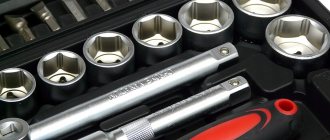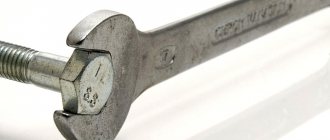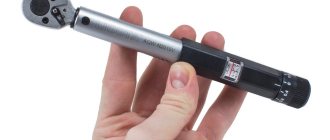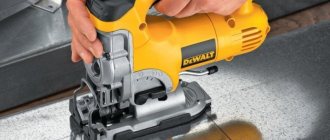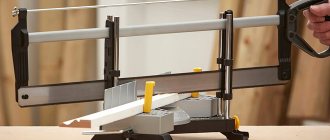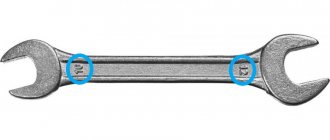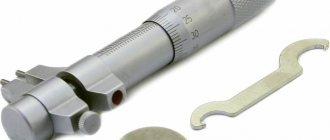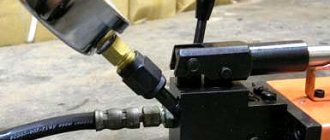The work of assembling and disassembling mechanisms and assemblies involves unscrewing nuts. Some of them are in places where a regular open-end wrench cannot reach. A socket wrench is available for unscrewing such hard-to-reach nuts.
What is a socket wrench?
This is a device for unscrewing that is put on the nut from the end (top). By analogy with the carob, it has a double-sided design. However, a socket wrench is a tool that comes in a variety of modifications. You can find angular, tubular, hinged, a version in the form of cap heads and other models. The socket wrench is in high demand among motorists. Only they can unscrew spark plugs or securely fasten wheels. A socket wrench, compared to others, has the advantage of a larger surface of contact with the object to be unscrewed.
What does a socket wrench look like?
This is a piece of a metal cylinder, in the inner cavity of which a hexagonal hole is made in various ways. The hexagon size corresponds to the nut being unscrewed. There are models with twelve faces. For special cases (for example, working with shut-off valves), a tetrahedral or triangular socket wrench is available. The cylinder is connected to a lever, which is used to rotate the tool. In the case of the version with removable heads, there is a separate rotating rod with a square or round slot. It can be equipped with a ratchet.
Keys have different protective coatings. The black color of the instrument comes from oxidation in oil. The white matte color is obtained by galvanic application of zinc compounds. The shiny surface of the key is obtained by chrome plating. A socket wrench can be produced with expensive anti-corrosion protection - this is a coating with a special composition followed by polishing.
How to choose the right tool: basic life hacks
The main criteria when choosing a tool are its purpose and size. There is no point in using a gas wrench when unscrewing nuts or using a hex wrench to work on a part with a star spline. When choosing a tool, you should know exactly how and why it will be used.
The dimension is no less important - the wrong size between the jaws can break the thread or damage the edges of the part. A solution might be to use more universal adjustable wrenches. However, practice shows that the simpler the tool, the more reliable and effective it is. It is better to have several sets of simple open-end or ring wrenches than a pair of adjustable wrenches.
The classic material for the manufacture of wrenches is tool steel containing the addition of chromium and vanadium (indicated by the CrV index). They increase the hardness of the working surface of the tool and, most importantly, its working profile. A special surface coating can be used to prevent corrosion.
The best option is galvanizing - it provides excellent protection of the metal coating from corrosion. Chrome-plated tools are too fragile and often chipped as a result of falls or impacts. Oxidation does not provide sufficient protection against corrosion, and the black color characteristic of this coating is impractical - it is difficult to find such a tool in the dark.
What kind of wrenches do you use? Monolithic Compound
When choosing a tool, you need to take into account the material of its handle. The efficiency of work largely depends on the convenience of how it lies in the hand. For monolithic keys, it is usually made of the same material as the working part. For adjustable or pipe handles, the handle may have a rubber anti-slip pad. Particularly safe tools have a dielectric coating on the handle, which makes them safe when working with parts that may be live.
Types of socket wrenches
The diversity of this type of tool is explained by the many places of application and the specifics of the tasks solved with its help. In this regard, the following socket wrenches are found:
- bilateral;
- T-shaped;
- angular;
- cruciform;
- articulated;
- in the form of a cap head;
- Y-shaped
- combined;
- with ratchet;
- socket wrench;
- universal.
Tubular socket wrench
Presented in the form of a tube, on both sides of which a hexagonal profile is formed. Made from special chrome-molybdenum steel. Covered with a protective layer of chrome plating or oxidation in oil. The tubular socket wrench has holes in its body. They are needed to ensure rotation of the tool with a lever. This is a metal wrench of the appropriate diameter, which is pushed into these holes.
Socket wrench
As the name suggests, it implies the presence of a hinge. This is a connection of parts that allows them to move relative to each other in several planes. Socket wrenches with a hinge are used when you need to unscrew or tighten a nut in hard-to-reach places. The axis of rotation of the tool is at an angle to the object being twisted. The keys can be single or double (joint heads are located on both sides).
Socket wrench
From the side, this product resembles the letter “G”. The sides of the “corner” can be the same or different lengths. In the latter case, the L-shaped socket wrench has a through hole on the smaller side. It is designed for a turning collar to provide a shoulder for tightening. Another purpose: for tightening nuts onto long studs, the end of which passes through the tool. The wrench can have either six or twelve edges for a nut with metric dimensions. Made from alloy steel. Cover the instrument with a chromium-nickel protective layer.
Socket T-wrench
It consists of an axis with a hexagonal head and a crossbar-collar located on top perpendicular to the hexagon. Such socket wrenches come with a movable and a fixed lever. They are convenient because when tightening and unscrewing, force is applied to the tool on both sides of the axis of rotation. This distributes the load more evenly.
If necessary, the movable knob can be moved to one side, increasing the twisting by increasing the arm. Wrenches for small threaded connections may have handles coated with non-metallic materials for ease of use. A T-shaped socket wrench can be produced with removable heads for nuts of different sizes and with a swivel joint.
Open-end wrench and its design
If we talk about wrenches, the first thing that comes to mind is the open-end type of this tool. This tool is intended for working with threaded fasteners that have a hexagonal head shape.
The bolt head or nut is driven by a horn tool due to two protruding jaws. It is these sponges that resemble horns, which is why the name open-end wrench appeared. Everyone is accustomed to calling this tool an “open-end wrench,” and few people know that its correct name is an open-end wrench. This name is prescribed in GOST, but few people use it due to the many words.
The tool consists of a handle and working parts, which are one whole. The standard spanner with horns has a special design. This design is due to the angle of the jaws relative to the handle, which is 15 degrees. There are models of instruments in which the angle of inclination is greater, but the standard value is 15 degrees.
The angle of inclination of the wrench is specially designed to facilitate work in confined spaces. Below is a photo that clearly shows the benefits of an open-end wrench, on which the horns are offset from the handle by 15 degrees.
The maximum angle of deviation of the direction of the jaws of the open-end wrench from the handle is 75 degrees. Each model of the tool has two jaws on each side, which expands the functionality of the tool. Moreover, the size between the jaws is different, which is necessary for unscrewing nuts and bolts of the corresponding sizes.
The advantages of open-end wrenches include their versatility and ease of use. In addition, they are not expensive, which allows each master to have the required number of tools. Now about the disadvantages that wrenches have - a small spot or area of contact between the tool jaws and the fasteners. Due to the small contact, the pressure on the corners increases, which begin to wrinkle and deform. This happens if the clamping force is higher than the maximum value for which the fasteners are designed. The larger the jaw size, the lower the likelihood of corners becoming wrinkled.
A type of open-end wrench is a special impact instrument. It is designed to unscrew stuck or rusted nuts. To do this, one side of the tool has a thickening, which is struck with a hammer or sledgehammer. To eliminate the possibility of deformation of the tool, it has a thickening not only in the area of the striking part, but also over the entire surface.
A separate type of wrench, which has not yet gained much popularity, but it is only a matter of time, is called universal or Unior. The peculiarity of such a tool is that one jaw of the wrench has a shortened part with a small protrusion, and the second has a convex part. This design allows the fasteners to be moved without the need to disconnect the tool from the nut. The contact spot is located further from the edges of the nut, so the likelihood of the edges licking off is extremely low. Manufacturers claim that such tools are useful even if the edges of the nut or bolt are licked off.
Making a brief conclusion about open-end wrenches, we can say the following - that these tools, due to their simplicity of design, have gained wide popularity, and are in demand even now.
Socket wrench heads
A convenient option for using this type of tool. If we compare a set of socket wrenches and replacement heads, the latter occupy a more advantageous position due to their compactness and lower weight of the set. A wrench is included with the removable hexagons. It can be equipped with a ratchet that can be adjusted to move in one direction only. Sets of socket heads can be supplied in two versions: with a hole in the side walls and with an internal tetrahedron at the end of the heads.
The driver in the first case is a simple metal rod with the appropriate diameter. In the second version, it has a square end with a locking ball. A swivel joint and an extension rod are provided. A set of interchangeable heads can replace a universal hexagon socket wrench. This is the only head with a set of spring-loaded metal pins inside. The rods are able to move freely. Deepening, they cover a nut of any size and fix it when unscrewing or tightening.
Main types of classifications
All wrenches can be divided into two main groups: female and male. Tools of the first category with their working profile cover the part from its outer sides. Female wrenches include the most common open-end wrenches, gas wrenches, box wrenches, etc. Male wrenches, on the contrary, are placed in the hole of the part (slot), these include hexagons, star-shaped, Bristol, etc.
Also, all keys are usually divided into the following categories:
- Monolithic
Made from an all-metal structure with a constant working profile size.
- Composite
They consist of a handle and a socket in which interchangeable heads of different sizes are attached.
Extension for socket wrench
It is used for working in hard-to-reach places as an additional link that transmits torque from the lever to the object being unscrewed. Often the socket wrench for the mixer is equipped with an extension. A union head with a square hole is mounted at one end of the metal rod. On the other there is a tetrahedron with a lock. The device can be made in the form of a piece of tube. Extensions are available in various sizes. They can be equipped with hinges.
Flexible extension devices are available. They are a rod that bends in all planes. Its ends are standard for tetrahedral slots. The shell can be different (polymer or rubber for ease of use). There is a spring inside. It is capable of transmitting the torque of the socket wrench to the nut being unscrewed.
Adjustable wrenches and their advantages
An adjustable wrench is a tool that looks like an open-end wrench with a variable distance between the jaws. The main advantage of this tool is its versatility in size. Due to their versatility, such tools are used mainly in everyday life.
Professionals use such tools extremely rarely, which is due to a number of inherent disadvantages:
- The presence of play in the movable jaw makes it impossible to squeeze the nut to unscrew or screw it in
- Over time, the moving jaw mechanism wears out, causing even more play to occur.
- Low strength, due to which it is impossible to exert great effort to unscrew
- The need for constant adjustment of the position of the movable jaw
You can use this wrench when you need to unscrew loosely tightened nuts or bolts. In all other cases, this device is characterized by low efficiency and reliability.
How to use a socket wrench?
A few tips will help you unscrew any nut and keep the tool safe for a long time:
- It is recommended to use socket wrenches with replaceable heads (or any other) strictly of the same size as the object being unscrewed. If the tool size is larger, then it is possible to round the edges of the nut or bolt head. This will make it difficult to unscrew further.
- If such a problem occurs, you can use a file to remove part of the metal from the side edges to the next lower key number. It is important to monitor the dimensions between the edges. The tighter the connection to the key head, the more likely success is.
- Before unscrewing, you need to make sure that the nut is not stuck. To do this, you need to try to turn it without applying excessive force. Otherwise, the thread or nut may be damaged.
- If this cannot be done, it is recommended to lubricate the nut with penetrating lubricant or wet it with kerosene and let it stand for a while. Lightly tapping the threaded connection promotes unscrewing.
- To increase the unscrewing force, it is necessary to use an extended lever. The larger the arm from the point of application of force to the axis of rotation, the higher the torque.
- When using removable heads or extensions, you must ensure that these attachments are firmly seated in their sockets. To do this, you need to insert them until the latch clicks.
- When a socket wrench with a ratchet is in use, then you need to set the shift lever to the correct position. Otherwise, when unscrewing, the mechanism will tend to tighten the threaded connection and vice versa.
How to use it correctly?
On the one hand, there is nothing complicated in using wrenches, yet it is a very simple tool, on the other hand, if you have no experience at all, then you need to know some things. Otherwise, there may be negative consequences, both for the key itself and for the nut.
First, and most importantly, the wrench must strictly match the size of the nut or bolt. The jaws should “sit” tightly on the part and only after that you can start working. Otherwise, there is a high risk of the wrench breaking off and damaging the part. Secondly, the movements should be smooth, pulling, and not sharp like jerks. This is primarily due to your safety: if the key falls off, then with sudden movements the chance of injuring your hand by hitting something increases sharply.
Everyone knows the life hack when the key is extended using a tube, which makes the lever arm longer and transmits more force. But in fact this is a mistake, since there is a risk of damaging the nut or the key itself. You need to understand that if you don’t have enough strength to tighten the nut, most likely you need to work with the nut itself (for example, lubricate it), and not try to apply inadequate efforts. Also, do not use wrenches that are damaged. This is dangerous.
